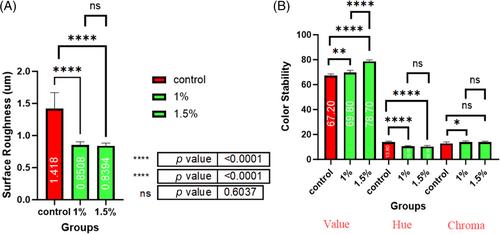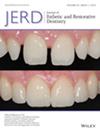The influence of the addition of titanium oxide nanotubes on the properties of 3D printed denture base materials
Abstract
Introduction
In this study, the effects of adding titanium dioxide nanotubes (TiO2) to 3D-printed denture base resin on the mechanical and physical properties of denture bases were examined for the first time.
Methods
The specimens were digitally created using 3D builder software from Microsoft Corporation through computer-aided design. In accordance with the test specifications for transverse strength, impact strength, hardness, surface roughness, and color stability, specimens were designed and printed with certain dimensions following relevant standards. TiO2 nanotubes (diameter: 15–30 nm and length: 2–3 μm) were added to the 3D-printed denture base resin (DentaBase, Asiga, Australia) at 1.0% and 1.5% by weight. Flexural strength, impact strength (Charpy impact), hardness, surface roughness, and color stability were evaluated, and the collected data were analyzed with ANOVA followed by Tukey's post hoc test (α = 0.05). Field emission scanning electron microscopy (FESEM) and energy dispersive x-ray spectroscopy (EDX) mapping were used to evaluate the dispersion of the nanotubes.
Results
Compared with those of the control group (0.0 wt.% TiO2 nanotubes), the average flexural, impact, and hardness values of the 1.0 and 1.5 wt.% TiO2 nanotube reinforcement groups increased significantly. Both nanocomposite groups showed significant color changes compared to that of the pure resin, and there was a considerable reduction in the surface roughness of the nanocomposites compared to that of the control group.
Conclusion
Adding TiO2 nanotubes to 3D-printed denture base materials at 1.0 and 1.5 wt.% could enhance the mechanical and physical properties of the material, leading to better clinical performance.
Clinical Significance
In terms of clinical applications, 3D-printed denture base material has been shown to be a viable substitute for traditional heat-cured materials. By combining this with nanotechnology, existing dentures could be significantly enhanced, promoting extended service life and patient satisfaction while addressing the shortcomings of the current standard materials.


 求助内容:
求助内容: 应助结果提醒方式:
应助结果提醒方式:


